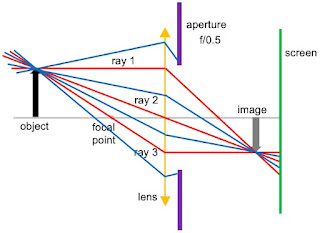Plonsey was born on July 17, 1924 in New York City. He served in the navy during the second world war and then obtained his PhD in electrical engineering from Berkeley. In 1957 he joined Case Institute of Technology (now part of Case Western Reserve University) as an Assistant Professor. In 1983 he moved from Case to Duke University, joining their biomedical engineering department.
 |
| Plonsey and Barr, Biophys. J., 45:557–571, 1984. |
Cardiac tissue has been shown to function as an electrical syncytium in both intracellular and extracellular (interstitial) domains. Available experimental evidence and qualitative intuition about the complex anatomical structure support the viewpoint that different (average) conductivities are characteristic of the direction along the fiber axis, as compared with the cross-fiber direction, in intracellular as well as extracellular space. This report analyzes two-dimensional anisotropic cardiac tissue and achieves integral equations for finding intracellular and extracellular potentials, longitudinal currents, and membrane currents directly from a given description of the transmembrane voltage. These mathematical results are used as a basis for a numerical model of realistic (though idealized) two-dimensional cardiac tissue. A computer stimulation based on the numerical model was executed for conductivity patterns including nominally normal ventricular muscle conductivities and a pattern having the intra- or extracellular conductivity ratio along x, the reciprocal of that along y. The computed results are based on assuming a simple spatial distribution for [the transmembrane potential], usually a circular isochrone, to isolate the effects on currents and potentials [on] variations in conductivities without confounding propagation differences. The results are in contrast to the many reports that explicitly or implicitly assume isotropic conductivity or equal conductivity ratios along x and y. Specifically, with reciprocal conductivities, most current flows in large loops encompassing several millimeters, but only in the resting (polarized) region of the tissue; further, a given current flow path often includes four or more rather than two transmembrane excursions. The nominally normal results showed local currents predominantly with only two transmembrane passages; however, a substantial part of the current flow patterns in two-dimensional anisotropic bisyncytia may have qualitative as well as quantitative properties entirely different from those of one-dimensional strands.This article was one of the first to analyze cardiac tissue using the bidomain model. In 1984 (the year before I published my first scientific paper as a young graduate student at Vanderbilt University) the bidomain model was only a few years old. Plonsey and Barr cited Otto Schmitt, Walter Miller, David Geselowitz, and Les Tung as the originators of the bidomain concept. One of Plonsey and Barr’s key insights was the role of anisotropy, and in particular the role of differences of anisotropy in the intracellular and extracellular spaces (sometimes referred to as “unequal anisotropy ratios”), in determining the tissue behavior. In their calculation, they assumed a known transmembrane potential wavefront and calculated the potentials and currents in the intracellular and extracellular spaces.
Plonsey and Barr found that for isotropic tissue, and for tissue with equal anisotropy ratios, the intracellular and extracellular currents were equal and opposite, so the net current (intracellular plus extracellular) was zero. However, for nominal conductivities that have unequal anisotropy ratios they found the net current did not cancel, but instead formed loops that extended well outside the region of the wave front.
Looking back at this paper after several decades, the computational technique seems cumbersome and the plots of the current distributions look primitive. However, Plonsey and Barr were among the first to examine these issues, and when you’re first you can be forgiven if the analysis isn’t as polished as in subsequent reports.
When Plonsey and Barr’s paper was published, my graduate advisor John Wikswo realized the the large current loops they predicted would produce a measurable magnetic field. That story I’ve told before in this blog. Plonsey’s article led directly to Nestor Sepulveda and Wikswo’s paper on the biomagnetic field signature of the bidomain model, indirectly to my adoption of the bidomain model for studying a strand of cardiac tissue, and ultimately to the Sepulveda/Roth/Wikswo analysis of unipolar electrical stimulation of cardiac tissue.
Happy birthday, Robert Plonsey. We miss ya!


















